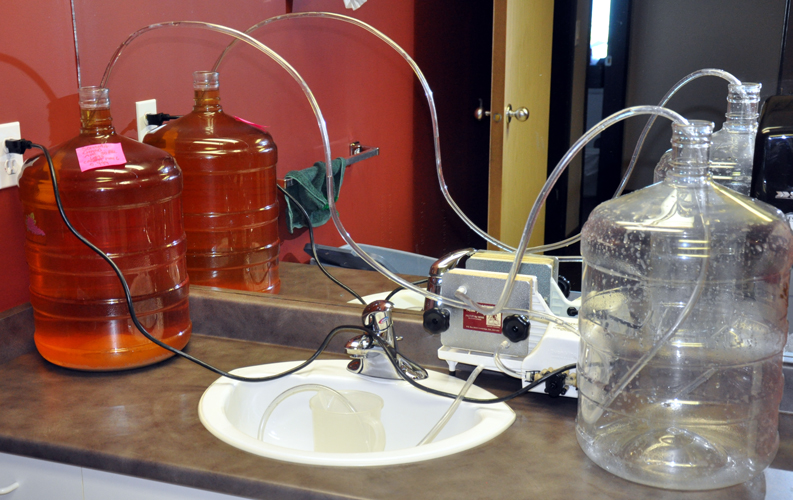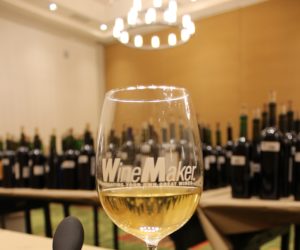
Winemaking is not a science but rather an art. There are many opinions on the pros and cons of the various processes that winemakers use. The subject of filtration is one such area of great debate that has polarized enologists, wine sellers and wine enthusiasts alike. Some advocate the practice of filtration, others believe that fining is sufficient, while many traditionalists simply let nature take its course.
Emile Peynaud, one of the greatest enologists of the twentieth century, commented on “the sensory consequences of filtering” in his book Knowing and Making Wine (John Wiley & Sons, 1984). “The mechanical action of filtering has never had a negative influence on quality.” Yet many wineries, such as The Robert Mondavi Winery in Oakville, California, now market “unfiltered” premium wines. So how do we make informed decisions about filtering?
Fining vs. Filtering
If we look at the basic differences between the two clarification processes — fining and filtering — used in winemaking, we will have a better appreciation of their respective effects on the end result (see “Fine Art of Fining,” Spring 2000). The goal is to have a clear wine, free of suspended matter, such as color pigments, tannins, and other phenolic compounds.
Fining refers to the use of chemicals, known as fining agents, to improve clarity. Filtering refers to the mechanical process of trapping suspended matter in a medium, for example filter pads, to improve clarity. The wine is forced through filter pads by air pressure, and is most effective when an electrical pump is used.
Should I filter?
The decision to filter should be based on the type of wine you are making, the source of the juice and if the wine will be fined and/or aged. In general, early-drinking wines should be filtered to avoid deposits settling in the bottle. Concentrate wines fall in this category and generally require filtering if vinified as four-week wines.
Wines from fresh juice or from grapes will throw more deposits and require a longer period to settle than in kit wines (a few months vs. a couple of weeks). If you plan to fine and rack your wines a few times before bottling, you may not need to filter them. White wines will remain clear but you should always expect red wines to throw deposits. Reds are considerably more concentrated in suspended particles which will tend to precipitate and cause sedimentation. Filtering is required to minimize deposits in red wines.
If you are making big, bold, full-bodied red wines and you want to retain the deep color, you may just want to let time take its course. With proper fining, you can still achieve a very clear red wine, though having some sediments form in the bottle is perfectly acceptable. Another consideration is the exposure of wine to the air. If the wine has been vinified carefully this shouldn’t be a concern as long as it’s well protected with sulfite. Filtering should be avoided if you are making an age-worthy Chardonnay with subtle aromas and a low “free SO2” concentration.
Choosing a filtering system
Electrically-powered filtering units consist of an electrical pump, a filtering medium such as cellulose pads, a housing assembly for the filtering medium and polyvinyl, food- grade tubing. The pump displaces the wine under vacuum or air pressure through the filtering medium.
If you are unsure about whether you want to adopt this practice, your local home winemaking supply store probably rents out filtering units. Whether you decide to purchase or rent a filtering unit, choose one that can handle the volume and quality of your wine.
For 19-L (5-gallon) batches, use a small filtering unit such as the Ferrari model or the Buon Vino Mini Jet, which can filter this volume of wine under 15 minutes. The Ferrari unit consists of round plates and requires a separate pump. The Mini Jet incorporates the plates and pump into a single unit. For larger batches, for example 54 L (14 gallons), a higher performance system, such as the Buon Vino Superjet, is recommended. The Superjet also incorporates the plates and pump into a single unit and can efficiently filter this volume of wine in under 15 minutes.
If you intend to filter volumes of 100 L (26 gallons) or more, you will need to invest in a higher capacity system. These are expensive for home winemakers, but well worth the investment. They can range between $300 U.S. and $700 or more. If this is not feasible, find some friends who are willing to split the cost and share the system. Your local home winemaking supply store can advise you of the best system for your needs. Don’t be tempted to use a small system for a large volume of wine. Filter pads will clog and will require changing before you are finished. You may be in for a long night of filtering!
Remember that wine does not like to be exposed to air. It’s important to choose a system that minimizes oxidation and to avoid pressurized systems. Pressurized filtering systems force wine, using air pressure, through the filter pads and therefore accelerate oxidation. The best type is the “closed” filtering system, which operates under a complete vacuum.
Choosing filter pads
The efficiency of the filtering system depends on the fiber/DE density of filter pads and on the total filtering surface area. Filter pads have a smooth side and a rough side. To filter properly, wine should flow into the rough side and out from the smooth side.
Filter pads are manufactured from cellulose fibers or diatomaceous earth (DE) in various densities for different degrees of clarification. A common method of rating filter pads is to number them from 1 (AF1) to 5 (AF5) with No. 1 pads used for coarse filtering of large suspended particles, No. 2 and 3 used for clarifying and polishing, and No. 4 and 5 for sterile filtering to remove any active yeast or spoilage organisms and to prevent re-fermentation. You should always start with a coarser pad before filtering with a finer pad. For example, white wines to be filtered with a No. 3 should first be filtered with a No. 2 pad. Assuming the wine is very clear either from several rackings and/or fining, you don’t need to filter with a No. 1 first.
As a rule of thumb, you should filter white wines down to a No. 3 maximum, and red wines down to a No. 2. Trying to filter red wine — especially if made from grapes — with a No. 3 is asking for trouble. Red wine has a much higher concentration of suspended particles than white wine, making it difficult to filter beyond a No. 2. Always assess the clarity of your wine before deciding on which pad to use. A white wine that has been poorly fined and still has solids in suspension will require a coarse filtering using a No. 1 pad followed by a No. 2. A No. 3 filtering might also be required. Let the wine clarify naturally as much as possible before filtering.
The second consideration is the total filtering surface area. A higher surface area will result in more efficient filtering. The surface area is calculated by multiplying the number of pads by the surface area of a single pad. For example the total surface area in a two-pad, round-plate Ferrari filtering system is approximately 760 cm2 (115 in2). Likewise, the three-pad Buon Vino Superjet has 1200 cm2 (183 in2). The filtering volume — number of pads multiplied by the pad surface area multiplied by the pad thickness — can be used when comparing the filtering efficiency of pads with different thickness.
Filtering wine
Filtering should be the last step before bottling. Wine to be filtered should be stabilized with sulfite, cold stabilized and aged before filtering. This is to avoid post-filtering sedimentation due to stabilization or aging.
All filtering components, vessels and equipment should be sanitized thoroughly before filtering. To sanitize the filtering system, first set it up according to the model you have, and then allow a few liters or gallons of cool water (approximately 13 °C or 55 °F) to pass through the system. Repeat this with a sulfite solution (3 Tbsp. of potassium metabisulfite in 10 liters or 2.5 gallons of water) followed by a cool water rinse. A small amount of citric acid (just discernible to the taste buds) can also be added to the sulfite solution. The resulting drop in pH increases the SO2 effectiveness, and the addition of citric acid “sweetens up” the pads and avoids any cardboard taste.
Verify the wine’s free SO2 concentration with a test kit and add the required amount of sulfite in the receiving vessel to bring the free SO2 to the desired level. (See “Solving the Sulfite Puzzle” on page 24). Once it’s done, you’ll need to test and adjust the free SO2 once again in the filtered wine.
When the system is set up, give it one last check to ensure that everything is hooked up properly. Most important, ensure that filtration plates are tight to prevent wine leakage. You’re now ready to start.
While the wine is being filtered, never stop-and-go the system. This will cause the filter pads to clog up and reduce filtering efficiency. Be sure not to disturb the sediment at the bottom of the vessels, which could clog up the pads. To further improve filtering efficiency, filter your wine at a cool (cellar) temperature and monitor the operating pressure of your system if it has a pressure gauge. Operate the system within the manufacturer’s suggested range for optimum efficiency.
Once you have finished filtering, throw out the used pads. Never reuse filter pads. Clean the entire system again with water and sulfite solution followed by a thorough rinse with water.






